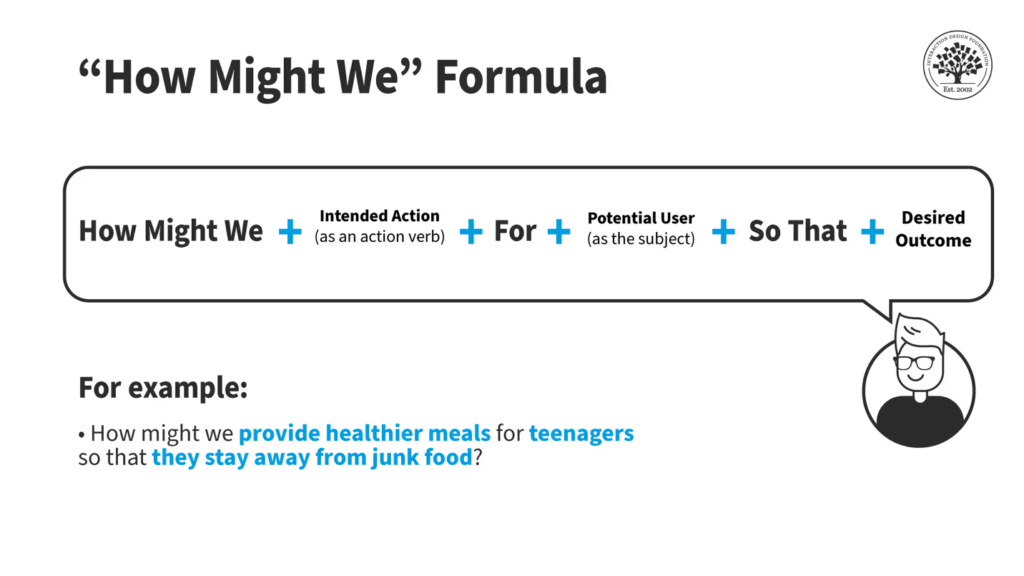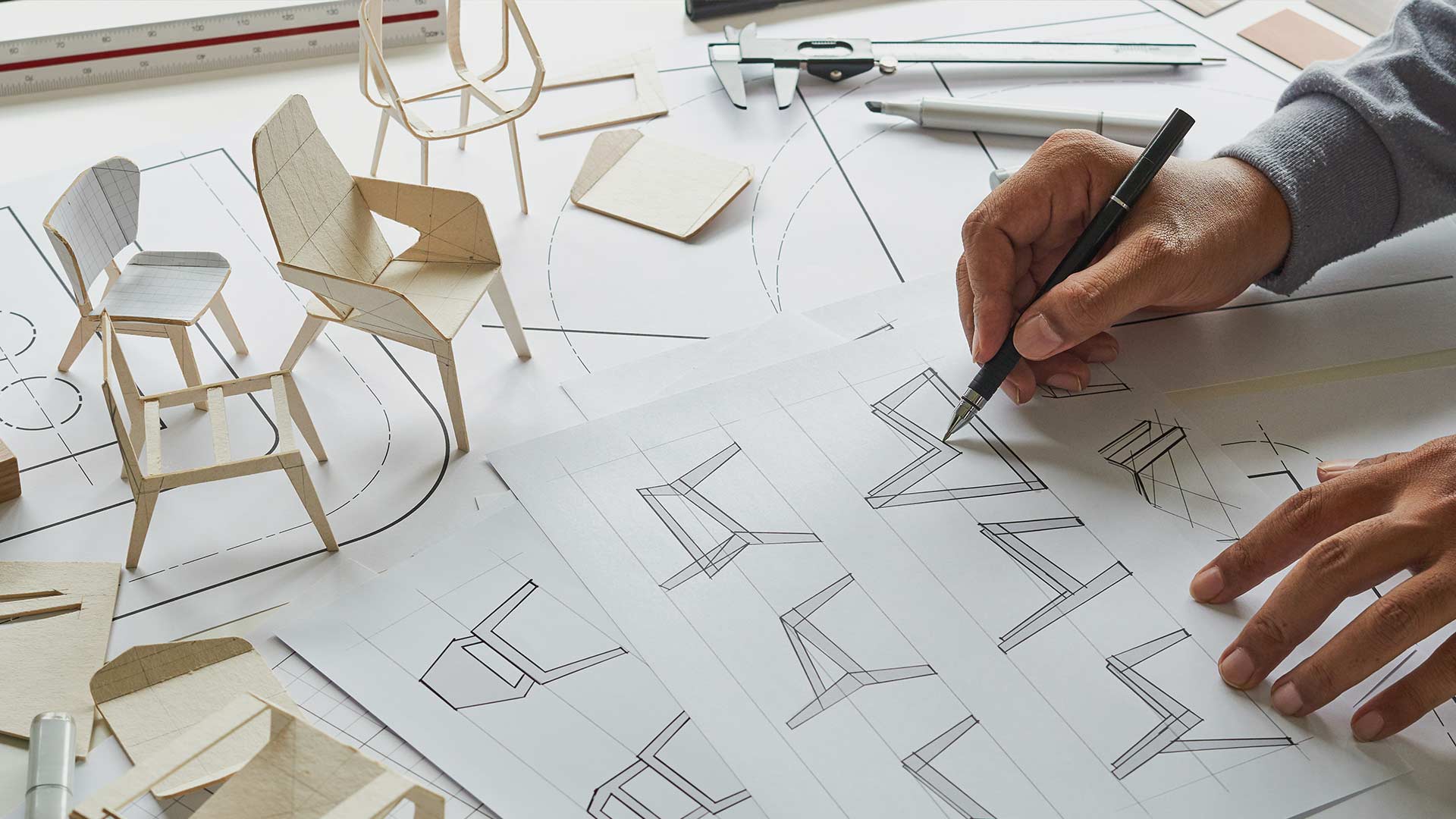Product design can be broad and open-ended, because there are a million problems and just as many solutions. How do you find the right problem to solve and the best solution? It starts with asking the right question. Originating from design thinking—a process widely used to approach design and innovation from a human-centered perspective— “How might we” (HMW) statements are an essential technique in product design and innovation, providing a structured way to tackle complex problems with a creative and collaborative mindset.
What are “How Might We” Statements?

Image Source: “How Might We (HMW)” by the Interaction Design Foundation.
An HMW statement is a question format that starts with the phrase “How might we…” and is designed to inspire open-ended exploration rather than limiting options. The “how” suggests that there is a solution or approach to be discovered, while “might” keeps the question open-ended, allowing for various potential solutions. Meanwhile, the “we” fosters inclusivity, reinforcing the idea that problem-solving is a collective effort.
To provide further context, complete your HMW statement with “for [who] so that [what happens].” This makes it clear who the potential users are and the effect you desire to have on them.
How to Create Effective HMW Statements
Good HMW statements are specific enough to provide direction but broad enough to inspire a range of creative ideas. They usually stem from observations, user insights, or well-defined pain points. For example, a product team at an insurance tech company might observe users struggling to compile information while working on a claim. The team might then ask, “How might we make it easier for claim adjusters to see relevant claim information so that they can accurately investigate and settle a claim?”
This format works best when:
– The question is rooted in user needs or pain points, creating empathy.
– It leaves room for a variety of answers, avoiding overly specific or restrictive wording.
– The focus is on opportunity rather than limitations and technical constraints.
In contrast, bad HMW statements are:
- Too broad — “How might we improve user experience?”
- Too narrow — “How might we help the user sort the list alphabetically?”
- Solution-oriented — “How might we use AI to recommend products?”
Why HMW Statements Are Useful in Product Design
1. Encourage Diverse Ideas: HMW statements unlock creative potential by posing challenges as open-ended questions. This can inspire a wide range of ideas from team members with different backgrounds.
2. Promote User-Centric Design: They force designers and stakeholders to focus on user needs rather than predetermined solutions, helping to develop products that solve real problems for users.
3. Aid in Ideation Workshops: HMW statements serve as focal points in brainstorming sessions. Teams can generate ideas quickly and keep conversations focused on solving specific challenges.
4. Foster Collaboration and Engagement: By framing challenges as something “we” can address, HMW statements make everyone on the team feel like they’re part of the solution, fostering a sense of shared ownership.
Asking HMW Drives Better Products
“How might we” statements are a powerful way to guide product design by framing complex challenges into approachable questions. They invite teams to think broadly and inclusively, driving innovative solutions that are user-centered and actionable. By asking, “How might we…”, product teams can reframe problems in the insurance industry to create better insurance software for buyers, agents, brokers, and all.
